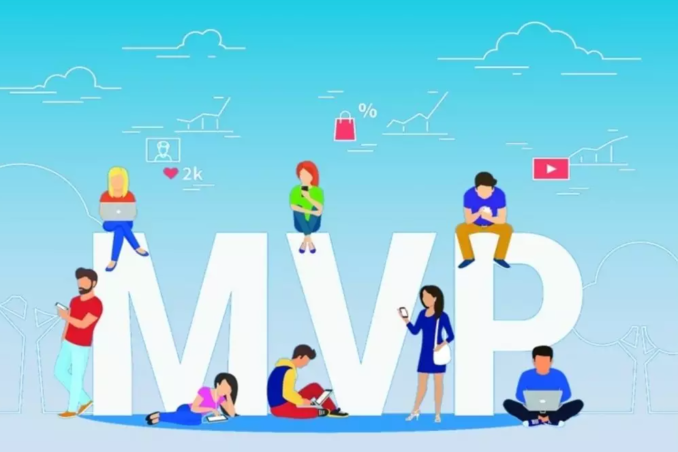Sometimes, even genius ideas don’t guarantee success on their own. We’re often told to “just do it”, but unfortunately this concept may not apply to everything. 90% of startups fail. The majority of them don’t meet the market needs. Without preliminary feedback, startups may introduce features that fall flat with their target audience. The mobile app industry is volatile and uncertain, so you have to instantly pivot in accordance with consumer demands. What should you do in order not to be left behind?
In 2011, Eric Ries published the book called ‘The Lean Startup’. There, he presented several pioneering concepts, and MVP (or Minimum Viable Product) was one of them. MVP offers an opportunity to receive user feedback about the product before you develop a final version of it. It minimizes the chances of failure from the get-go. Nowadays, many companies worldwide use the concept of MVP. That’s why developers like Purrweb are a godsend for those who want to launch an app without taking unnecessary risks.
A closer look at the concept of MVP

img source: devteam.space
So, what is an MVP? Why is it quickly becoming the new standard when it comes to launching mobile apps? Even giant companies like Spotify, Instagram, Airbnb, and Facebook once introduced their products in the form of MVP.
Minimum viable product (MVP) implies creating a product with the bare minimum of essential features. This helps to release it fast, get user feedback, and test the product’s ability to meet the market needs before you invest substantial resources in the development of a final version.
In such a way, entrepreneurs are able to navigate the oversaturated app market and draw insightful conclusions. In turn, this knowledge helps you gain a competitive edge. According to CB Insights, 42% of startups went belly-up as a result of insufficient demand for their products or poor timing.
Eric Ries believes that the best way to ensure success is to validate your product through real-time feedback from users. He goes on to further describe this strategy as the ‘build-measure-learn loop’. Ries states that the commencing stages of launching a product should be geared towards ascertaining the viability of this product instead of focusing on generating profits. An MVP helps businesses test their market hypothesis in a low-risk yet high-reward way. Releasing a trim-down version of the app which contains only core functionality allows collecting primary feedback on the features that users actually want or require. This can help to save not only developers’ time but also the company’s finances.
Why is MVP worth considering?

img source: nopio.com
Let’s examine how MVP can benefit your project.
- You validate the app concept in advance before spending too much time and effort.
- You understand your target audience and its exact needs.
- You make a decision about the app functions that is based on real users’ feedback.
- You launch the app much sooner since all you need to provide is the bare minimum of essential features.
- You save time and budget by not developing unnecessary features.
- If the MVP is tested and approved by users, you can attract investors in the early stages of the product’s development.
4 things to do before launching
1. Specify the target audience and your challenge

img source: easyaffiliate.com
Before launching any type of product or business, an entrepreneur has to do some market research. It is recommended that you identify your competitors and the number of their users. Are your competitors doing a good job in solving the problem of the target audience?
Understanding the needs of your potential customers allows you to provide a better solution and stand out from the crowd. For instance, at the early stages, Uber interviewed their clients which allowed them to determine a few things:
- People hate waiting for a taxi in the street; they would rather book a cab from home.
- Providing exclusively yellow cars is not affordable and accessible.
Knowing these details, Uber created a perfect solution for everybody. Now, they have hundreds of thousands of satisfied customers.
2. Analyze the competitors

img source: travelpayouts.com
SimilarWeb is a resource that provides web analytics. It allows you to study your competitors’ traffic, identify the keywords they use for marketing, and explore the demographics they target. These are only a few of the many other useful features. You can also analyze the feedback about their existing products on the Internet. As soon as you identify the strengths and weaknesses of your competitors, you can create a well-thought-out MVP and solve the issues that your competitors have.
3. Minimize the list of MVP characteristics
Make a list of steps that a customer has to take when using your app and outline characteristics for every step. That way, you’ll be able to pinpoint the high- and low-priority tasks for your project. As soon as you determine the features that are must-have for your app, you can add several more considering the ones that a client might need.
4. Test your app on every stage of its development

img source: mobileappdaily.com
When you have a comprehensive understanding of the amount of work that has to be done, you can proceed with product development. Testing your product at every stage will prove that you move in the right direction.
Alpha testing is performed by your team members, while beta testing is based on real users’ feedback. Beta testing will help you identify:
- If the application meets the market needs and provides a required solution
- If the application works faster and better, as well as if it’s cheaper than your competitors’ apps
- If the target audience likes the app, wants to use it, and is ready to pay for it
Conclusion
To make a long story short, MVP has a whole range of benefits. It makes you confident that an app provides a demanded solution and will be significant in the market. With such an approach, unnecessary risks and uncertainty are effectively avoided.





